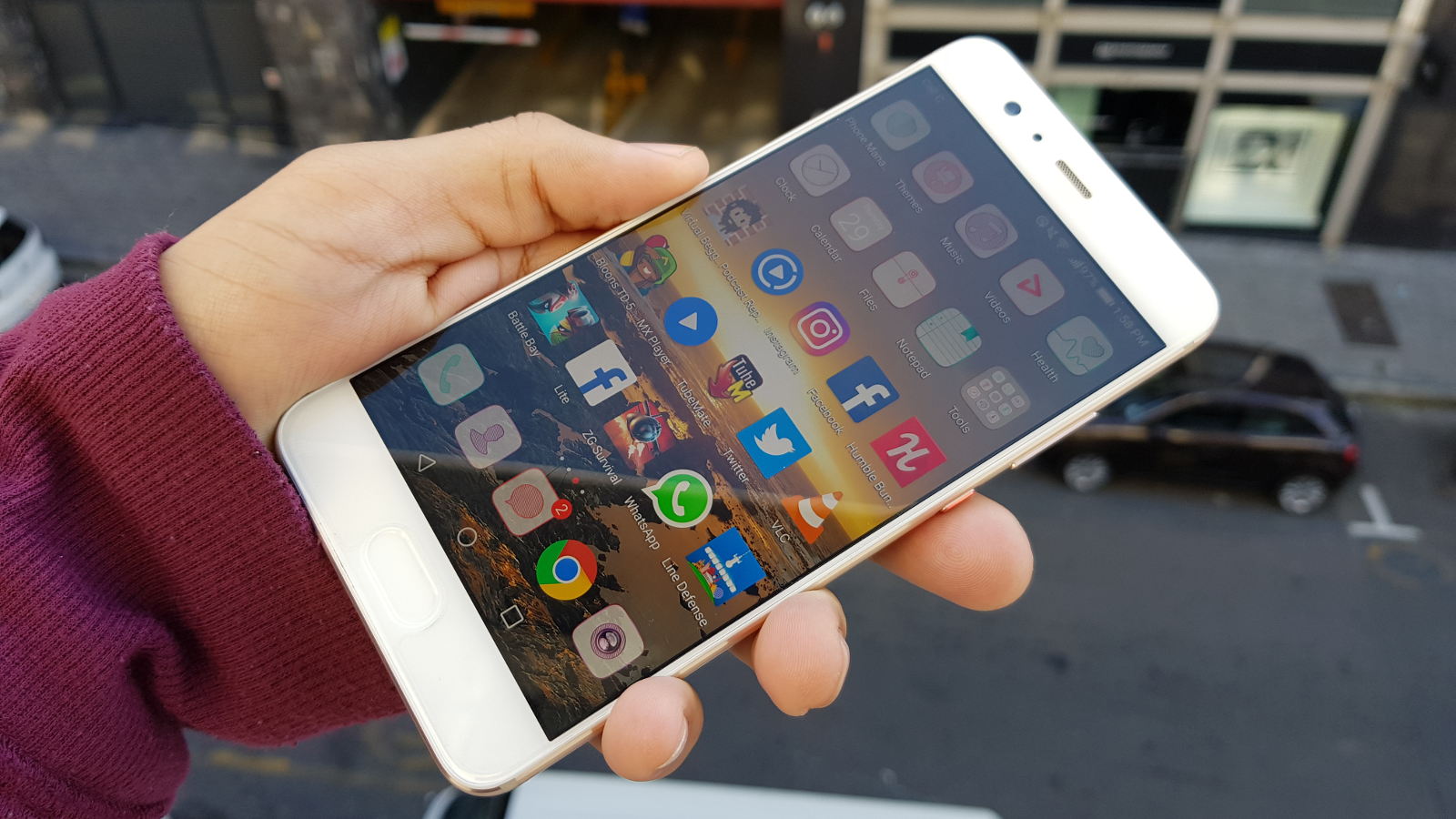MTN South Africa has once again emerged as the country’s top-performing mobile network, securing the highest score in the Q2 2025 MyBroadband Network Quality…
Huawei P10 Plus review: has it gone off the P10 path?

Huawei really hit the ball out of the park with the P9 (review) and P9 Plus. Building on the success of the P8 (review), we got a high quality metal design, a fast fingerprint scanner, an Android skin that was mostly useful and those dual cameras.
Yes, the dual camera system was really the star of the show, delivering some impressive results in both day and night. The ability to refocus after the fact wasn’t new, being pushed by the HTC One M8 for starters, but the simulated aperture adjustments popularised depth-of-field trickery seen in today’s most popular handsets.
The P9 wasn’t without its flaws though. Slowdown after a few months translated into lengthy delays when launching the camera and other apps, for one. Then there was the video quality, lacking 4K and crisp video recording.
So how has Huawei delivered with the P10 and P10 Plus? We got a hold of the larger model for review…
One step backward, one step forward?
When it comes to the design department, I still feel that the P9 had the more distinctive, aesthetically pleasing design.
Look at the front and you’ll notice those thick bezels even more, thanks to the G6 (review) and S8 (review) slimming down in this department. In fact, the curved corners, thick bezels and white front all contribute to make a phone that looks like the HTC One A9. Which in turn looks like an iPhone. It’s not going to win awards if you only looked at the front, then.
Flip the phone over and you’ll have a “hyper diamond cut” finish on it, with tiny ridges all over it. It feels like plastic but it certainly makes the phone feel durable and distinctive. The combination of the finish and gold colour doesn’t work for me though, being a little too nouveaux riche for my tastes. But I could see myself going for a black, canary yellow (don’t judge me) or white finish.
Look at the back and you’ll also notice that the fingerprint scanner has been moved to the front. I loved the rear-mounted scanner on the P9 so I am disappointed with this decision (no more downward swipes to activate the dropdown menu), but the front-mounted scanner is super accurate and extremely fast anyway.
Otherwise, we’ve got a USB Type C port/earphone jack/speaker grille at the bottom, smooth volume rocker and ridged power button on the right, IR blaster at the top (it’s not on the regular P10, unfortunately), and SIM/microSD card bay on the left.
So then, the Huawei P9 still reigns supreme in the aesthetic department, but I don’t worry about accidentally putting the P10 Plus in the same pocket as my wallet or keys. It just feels more durable.
Has Huawei improved Android?
My biggest qualm with the P9 was that it slowed down dramatically after a few months. But it’s difficult to test something like this in a short review period.
Nevertheless, Huawei has tackled this issue with EMUI 5 (first seen on the Mate 9), specifically claiming that their new Android skin uses machine learning to fix slowdown.
Otherwise, EMUI 5 here is more or less identical to the Mate 9, so that means a more sensible settings menu, an optional app drawer, a fresh lick of paint for the dropdown menu and app twin functionality, among other changes.
Things like the app twin functionality and optional app drawer are solid, welcome options, while you’ve got to laud Huawei’s attempt to stave off slowdown. In saying so, those expecting a huge visual overhaul will need to rely on the themes app or a launcher, because it’s still pretty similar to previous Huawei handsets.
The phone is also only on Android 7.0 instead of April’s 7.1 update, it should be noted.
But if there’s one major annoyance it’s in the user interface department, with the company opting for an “innovative” gesture-based approach that’s actually ripped from Meizu. A simple touch of the fingerprint scanner takes you back one screen, a press takes you to the homescreen, while a swipe across the button opens the multitasking menu. Swipe up from the bezel and you’ve got the Google app launching.
It all sounds fine on paper, with the back gesture and homescreen press mostly working as advertised. But the multitasking gesture required multiple swipes half the time, making for a rather annoying experience. Activating the Google app also required multiple tries now and again. I prefer Meizu’s take on the formula, using a physical button and being more accurate.
In any event, you aren’t forced to use the gesture stuff, as EMUI allows you to revert to traditional on-screen buttons instead. Thank goodness. And yes, you can tweak the layout of these keys, in case you prefer a Samsung-style layout.
As for preinstalled goodies, you’ve got the usual music, video and health apps, that phone manager hub (for cleaning up storage/RAM, checking mobile data usage etc), themes app, file manager, notepad, voice recorder, flashlight, mirror and smart remote app for the IR blaster. So most of these we’ve seen on previous phones before, but they’re all useful for the most part.
What about performance?
Last year’s Kirin 950 chipset was a revelation for Huawei in many ways, being the first time that the company used heavy-lifting cores in its processor family. Previously, the company utilised eight A53 CPU cores only, being energy efficient cores rather than the super-powerful CPU cores seen in rival chips.
The Kirin 950 changed that, delivering a more traditional octacore processor that consisted of four powerful A72 cores and four A53 cores for lighter tasks. In other words, gaming and other activities (like photography and VR) saw bigger gains and smoother performance.
As we predicted last year, the Kirin 960 powers the Mate 9 (review) and P10 Plus, so what’s different this time? Well, we’ve got four A73 cores for the heavy tasks, being a slight improvement at best, while the four A53 cores remain.
The biggest change is in the graphics department, as Huawei delivered a massive upgrade here. Instead of the Mali T880 MP4 (quad core) GPU, we’ve got a new generation Mali G71 MP8 GPU. It’s still a step behind the Galaxy S8 GPU, packing a Mali G71 MP20 (20-core) configuration, but it makes for a huge upgrade over the P9.
What do benchmarks tell us? We got scores of over 146 914 and 145 547 on two Antutu tests, one soon after the other. This puts it in the top 10 at the time of writing, ahead of the Mate 9 and iPhone 6s Plus, but behind the Galaxy S8, Xiaomi Mi 6 and iPhone 7. Weirdly enough, I ran two Antutu tests a day later, getting a score of 124 000 and 126 000 — go figure.
Nevertheless, it’s worth noting that the second test on each day didn’t see a huge drop over the first tests. It’s nowhere near as big a drop as the Mate 9 (137 000 to 127 000) or even the LG G6 (142 000 to 137 000). In other words, it seems like the HiSilicon chip packs a sustained, cool punch that should bode well for long periods of heavy tasks (gaming, using the camera etc).
The Huawei P10 Plus is a beast of note thanks to the Kirin 960 chip and 6GB of RAM — at least on paper
Meanwhile, GFXBench benchmarks are pretty middling, getting 490 frames in the Car Chase scene (the Google Pixel scored over 1100, for example), 746 frames in Manhattan 3.1 (the Xiaomi Mi 5 scored 1550) and 2361 frames in the T-Rex scene (the iPhone 6, Google Pixel and Galaxy Note 7 scored higher).
As for actual performance, we found things to be extremely smooth, promptly launching apps, juggling tasks and switching between screens. Using the camera and playing media was also a slick experience. I’m more concerned about longer term usage but it’s not exactly something I can test right now. In any event, you shouldn’t be left wanting more speed.
What about the all-important gaming department?
We installed Suicide Squad, Leo’s Fortune, Riptide GP 2, High Risers, Maximum Car and Line Defense, being a pretty solid mix of lightweight and demanding games. High Risers and Line Defense ran without a hitch, being relatively light on resources. I did find a little judder on Maximum Car, but after a minute or two, it was plain sailing. Otherwise, Riptide GP 2 and Leo’s Fortune looked and played great from the get-go. Leo’s Fortune in particular brings the P10 Plus’s 2560×1440 LCD screen to life, but then again, it makes any display look good.
I did notice that Suicide Squad, while mostly smooth, was the only title that would really make the phone warm to the touch. But it was never close to uncomfortably warm, thankfully. In other words, if gaming is important to you, the P10 Plus will definitely let you crank the detail up.
Our review unit is also packing a gargantuan 6GB of RAM. It’s a bit of a strange situation, because some brands with 6GB phones opt to kill background apps anyway in the name of battery life. We launched multiple games, WhatsApp, a benchmarking tool, a file manager and Sync for reddit, and were able to seamlessly switch between them without losing our place — no app restarts here.
Camera

Huawei P10 Plus Sample

Portrait Mode on the front camera is a software affair, with blurring not exactly perfect, as you can see.
Huawei P10 Plus Sample

The P10 Plus manages to freeze the birds perfectly here, with the afternoon colours accurately produced too.
Huawei P10 Plus Sample

Zoom in on this monochrome photo and you'll notice plenty of detail, such as signs and even birds in the distance.
Huawei P10 Plus Sample

A daytime shot of some beer. Notice the condensation and even the tiny hairs at the top of the glass.
Huawei P10 Plus Sample

You don't need to use the wide aperture mode to get great shots like these.
Huawei P10 Plus Sample

An otherwise lovely shot using wide aperture mode is marred by errant blur at the top of the glass.
Huawei P10 Plus Sample

Have an arty shot.
Huawei P10 Plus Sample

You'll need a few shots to get one without blur, especially in the unpredictable lighting of a bar/live music venue.
Huawei P10 Plus Sample

The monochrome camera works really well in low light situations, it must be said.
Huawei P10 Plus Sample

Huawei phones used to struggle with HDR up until the P9. Fortunately, everything is kept frozen and ghost-free here as well.
Huawei P10 Plus Sample

I was hoping to get the entire flower in focus here, but the next shot saw the opposite happen. Still, we've got lovely, well-defined lines here.
Huawei P10 Plus Front

Huawei P10 Plus Back

Huawei P10 Plus Antutu

Huawei P10 Plus Camera App

Huawei P10 Plus Bottom

The Mate 9 laid the foundation for the P10 and P10 Plus, delivering a familiar dual camera setup, but with a 12MP RGB camera and a 20MP monochrome camera (instead of 12MP+12MP). This was capable of some interesting technical features, as Huawei’s product team told us in a Q&A.
We see the same dual-camera layout and resolution on Huawei’s flagship range, but the P10 Plus also ups the ante with larger f/1.8 apertures for both cameras (instead of f/2.2). So, what should you expect?
Daytime shots were right up there with the better phones this year, featuring great resolvable detail and solid colour reproduction (right-click on the images and open in new tab to open them at full resolution). We did notice iffy white balance in some shots (check the first shot in our G6/S8/P10 Plus gallery) and detail wasn’t always on par with the Galaxy S8, but it’s still going to produce some fantastic, flagship-worthy images.
Take the phone to a bar, braai or other dimly lit venue and you’ll come away impressed as well, much like the Mate 9 and P9. I did find that Samsung’s phone would generally capture images with less blur and more fine detail though, but the P10 Plus and its f/1.8 apertures suck up oodles of light anyway.
As for video recording, the P10 Plus also bangs out 1080p/60fps and 4K video options. Quality wise, it seems like a good step above the P9 during the day, although colours are still a little too saturated for my liking. It’s definitely a great performer in low light though (hanging with the S8), as opposed to last year’s flagship, which was nigh-on unusable due to the lack of light captured and comical oversaturation.
The phone is pretty competitive with the Galaxy S8 when it comes to audio recording too, taking it to a live gig. Of course, these environments are pretty unpredictable, but when standing on the same spot and recording the same song at 1080p/60fps, the P10 Plus seemed clearer. What do you think? Check out the comparison below.
Battery life
The P10 Plus, being a larger smartphone, packs a 3750mAh battery, which is definitely one of the larger batteries in a flagship phone. By comparison, the Galaxy S8+ tops out at 3500mAh, while the LG G6 has a 3300mAh cell.
I found the phone to be more than capable of a full day of solid usage, such as snapping photos, using social media/WhatsApp and watching YouTube. Get home and your phone will still have plenty of juice for the night and next morning. It’s a two day phone if you engage in some power saving here and there, but the Mate 9 still has it beat. Standby times are also pretty ho-hum though. You won’t be leaving your phone at home during the weekend and having much juice (if any) come Monday morning.
We also put the phone through the usual video playback test, using MX Player to play a 20 second looping video (1080p/60fps). Naturally, we cranked the brightness up while staying connected to mobile data and WiFi. The result was that the phone hit the 5% mark after just under seven hours of running. An hour or so above the average mark in these tests. The Mate 9 lasted for about eight and a half hours, packing a few hundred more mAhs.
A P10 Plus or Minus?
Huawei’s P9 represented a big leap over the P8, delivering a fingerprint scanner, innovative dual-camera setup and a fetching design.
The leap from P9 to P10 isn’t quite as impressive, with the gesture-driven UI being a dud and the design feeling derivative compared to rival phones (and its predecessor). Still, Huawei has improved low-light video performance, delivered better photo quality and a durable design.
Key numbers
Dimensions: 74.2mm x 6.98mm x 153.5mm
Weight: 165 grams
SIM type: hybrid SIM (nano)
Display: 5.5-inch, 1440×2560, LCD
Chipset: HiSilicon Kirin 960 octacore processor | quad-core ARM Cortex-A73 2.4Ghz & quad-core ARM Cortex-A53 1.8Ghz | Mali G71 MP8 GPU | 6GB RAM (review unit)
Storage: 64GB expandable, 128GB expandable (review unit), 256GB expandable
Imaging: (Main) 20MP monochrome camera f/1.8 aperture, 12MP RGB camera f/1.8 aperture, OIS, dual-tone flash | (Front) 8MP, f/1.9 aperture
Video: 4K at 30fps, 1080p/60fps
Battery: 3750mAh fixed
Cool features: front-mounted fingerprint scanner, IR blaster
OS: Android 7.0 Nougat with EMUI 5.0
Verdict: The P10 Plus is two steps forward and one step back for Huawei, it must be said. You’ve got a phone that delivers flagship-level camera quality, brisk performance and sturdy build quality. But you’ve also got a new take on user navigation that just doesn’t work and an unimpressive design compared to the competition (that iPhone-style front). Also, it’s about time the company delivered water resistance.
Score: 8.5 out of 10
Disclosure: Huawei allowed us to keep the P10 Plus review unit.




















